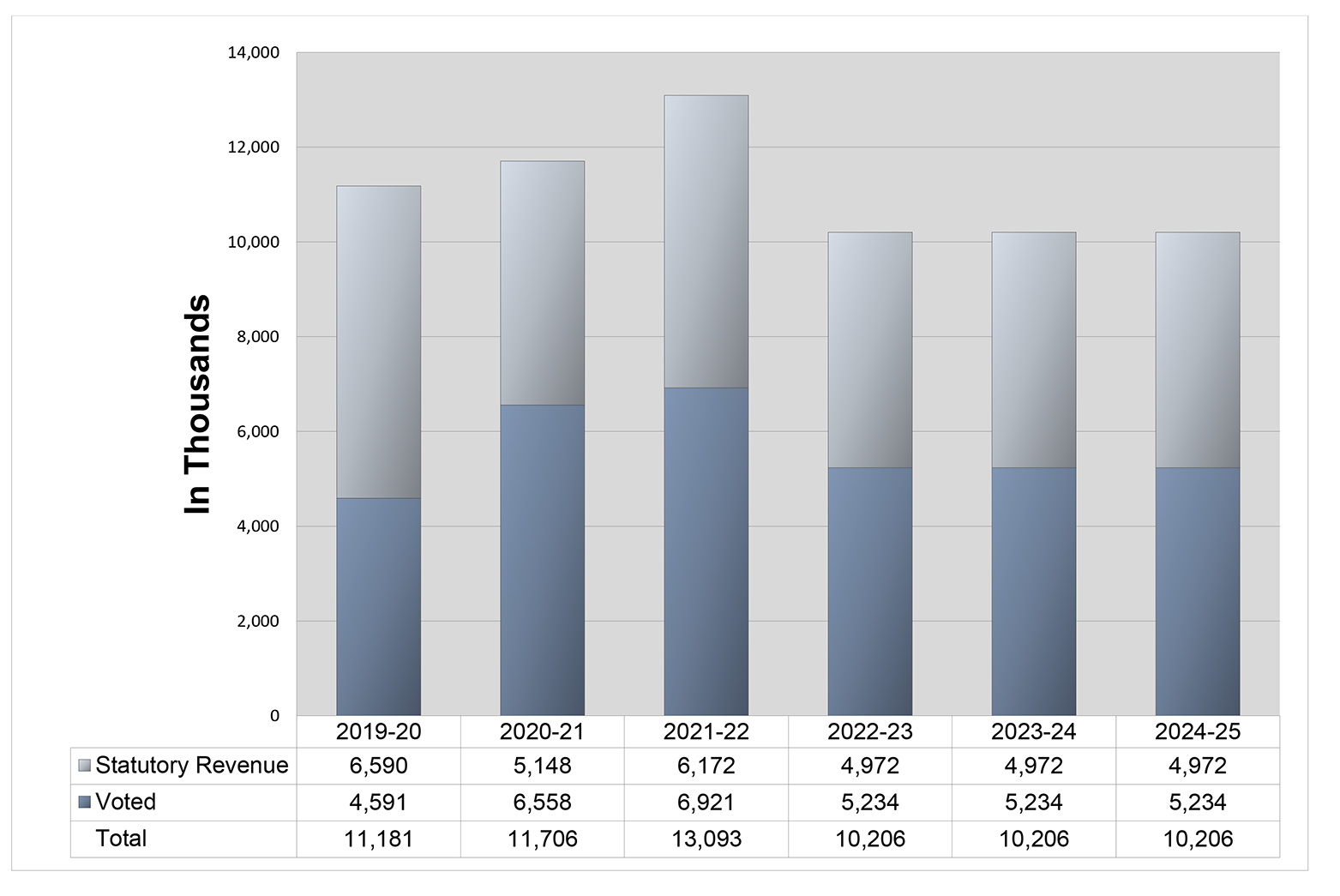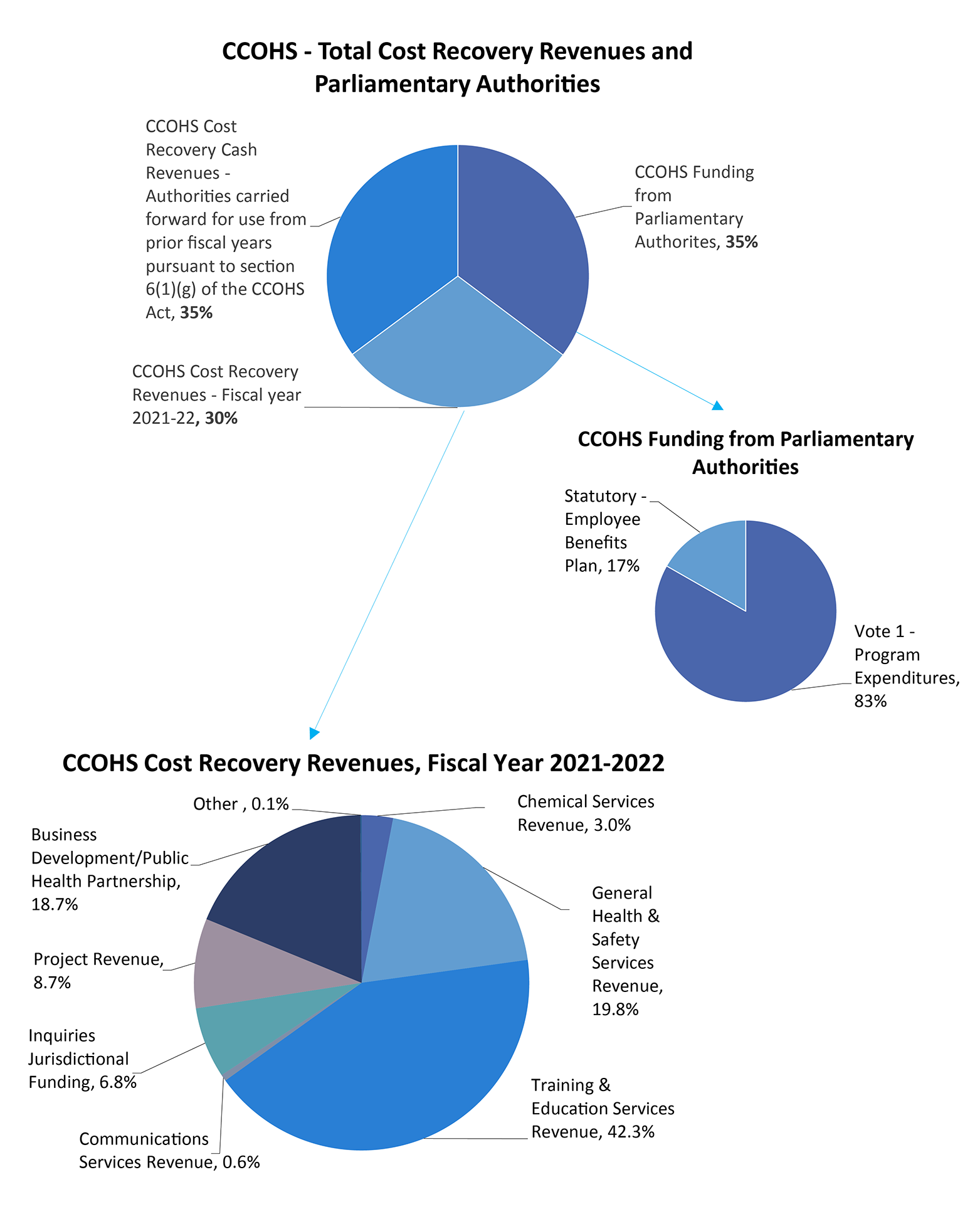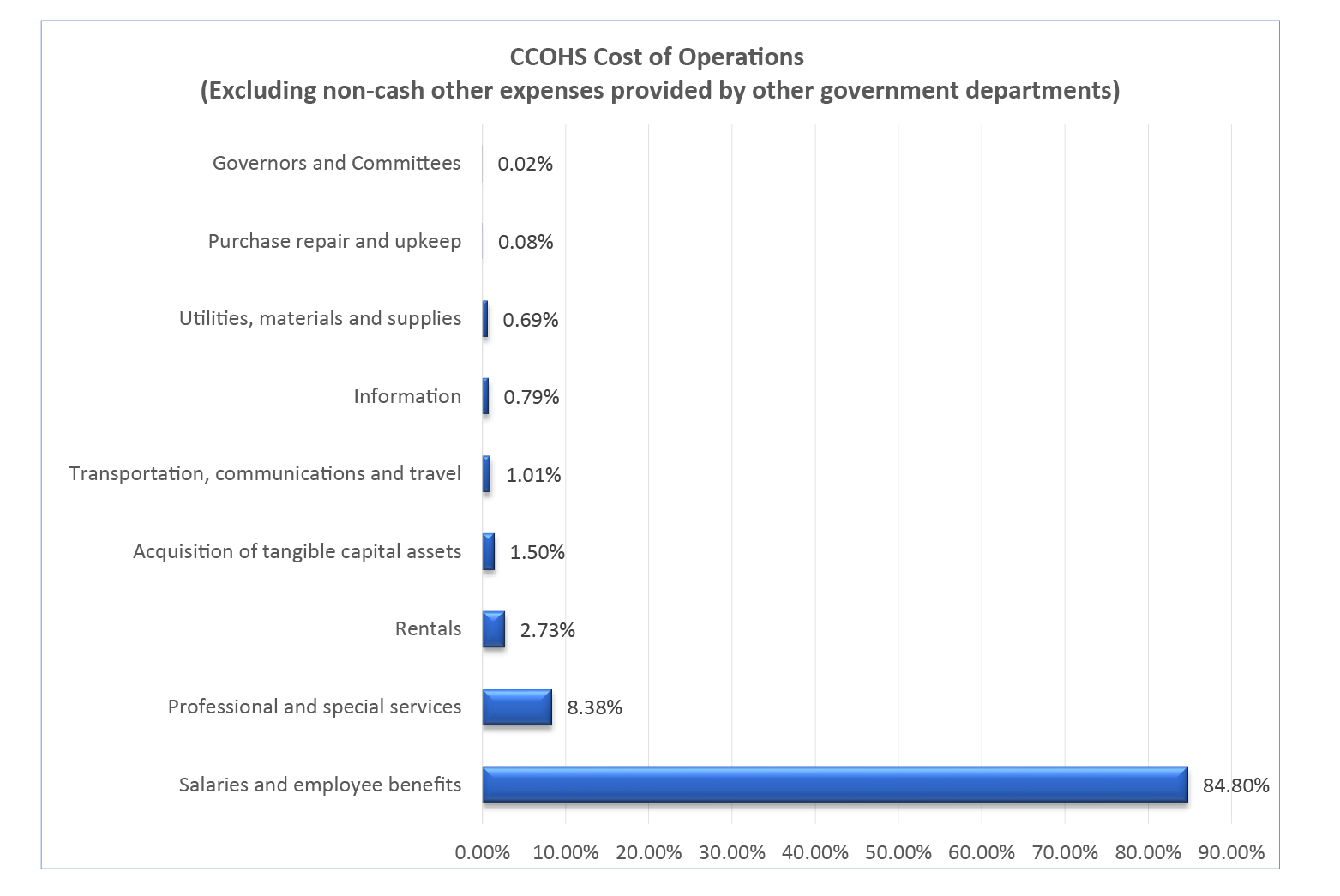Scheduled maintenance - Thursday, July 12 at 5:00 PM EDT
We expect this update to take about an hour. Access to this website will be unavailable during this time.

Canadian workers have a right to a healthy, respectful, and safe work environment. But that’s not enough–our workers deserve to feel happy, valued and fulfilled. Each year, our government strives to do more, and to do better, for these hard-working people and their families.
While the COVID-19 pandemic created stress and uncertainty for many of us, the Canadian Centre for Occupational Health and Safety (CCOHS) has been and continues to be there to support Canadian workplaces. They have innovated and adapted our lives to the pandemic, with their work on COVID-19 safety, on stress and anxiety and caring for healthcare workers and paramedics. With guidance from CCOHS and the Public Health Agency of Canada, we have been able to go to work, re-enter our communities, and equip ourselves with the knowledge of how to keep each other safe. Invaluable resources and tools, such as online courses, infographics, and tip sheets, have helped navigate important issues such as vaccination plans, hybrid work models, disconnecting from work and fostering mentally healthy workplaces.
Since the introduction of the Work Place Harassment and Violence Prevention Regulations, we have been working closely with CCOHS to develop resources that help employers and employees understand their role in preventing harassment and violence. We also consulted with federally regulated employers and labour representatives to establish an online list of qualified, professional investigators, who can be called upon to investigate and address occurrences of all forms of workplace harassment and violence. I would like to thank CCOHS for continuing to host and maintain the tool on their website.
Our government is committed to supporting and guiding workplaces through these challenging times and changing world of work. I look forward to continuing our work with CCOHS to create healthy workplaces that are safe, compassionate, and support the physical and mental well-being of workers in Canada, that all may thrive.
The Honourable Seamus O’Regan Jr. Minister of Labour

I am pleased to present the 2021-2022 Departmental Results Report for the Canadian Centre for Occupational Health and Safety (CCOHS).
The COVID-19 pandemic remained at the forefront for all Canadians this past year as workplaces across the country, all in various stages of the pandemic, faced unique challenges. To assist workplaces, we relied on our network of partners and stakeholders to inform our work and the supports we could provide to workers in Canada.
We continued our partnership with the Public Health Agency of Canada to develop courses, tools, and other resources with guidance on conducting risk assessments, helping workplaces navigate a safe return to work, and designing hybrid workplaces for those planning a blend of remote work with a return to the physical workplace.
We extended the reach of this important guidance with the development of the CCOHS Safe Work mobile app that enables access to our free COVID-19 resources in remote areas where internet connectivity may be unavailable or unreliable.
We collaborated and partnered with organizations across Canada to spread prevention messages and created courses and guidance materials to address topics of concern including substance/opioid use; workplace harassment and violence; mental health; and occupational disease.
Additionally, to support workplaces in their efforts to create environments that are free from harassment and violence, new resources were developed, and virtual workshops were held that outlined prevention measures and employer duties and responsibilities including those related to the federal Work Place Harassment and Violence Prevention Regulations that came into force on January 1, 2021.
This year we also worked to further strengthen relationships with Indigenous communities, learning how we can better serve and support them, from customizing our online courses to co-facilitating roundtable discussions and offering guidance on developing harassment and violence prevention programs.
We are dedicated to our mandate to provide workplaces and workers in Canada with information and tools to make their work both physically and mentally safe and look forward to partnering with our stakeholders in creating safe and respectful workplaces for all.
Anne Tennier, P.Eng. EP President and Chief Executive Officer
$13,093,032
Actual Spending
106.2
Actual FTEs
Outreach: 11.3 million people visited the CCOHS website for health and safety information 14.7 million times this year. To help measure the impact of the website, a user survey was deployed throughout the year. Out of the 26,663 respondents this year, 86% said the information was easy to access and 81% said they would use information from the website to make changes to their workplace. OSH Answers fact sheets had 13 million visits from 10.3 million users, and the mobile app had 6,156 downloads. The Safety InfoLine service answered 6,751 inquiries received from workers in Canada seeking advice and guidance through our confidential person-to-person inquiry service. Users of the service were surveyed on the quality and effectiveness of the service, and the results showed that 60% said the information received would lead to current or future changes to their workplace.
Partnerships/Collaborations: CCOHS continued its partnership with the Public Health Agency of Canada and other stakeholders to develop COVID-19 related courses and resources with guidance on conducting risk assessments, returning to work safely, and designing hybrid workplaces for those planning a blend of remote work with a return to the physical workplace. Additionally, CCOHS maintains the Roster of Investigators, a list of qualified, professional investigators, on its website to support the Work Place Harassment and Violence Prevention Regulations. CCOHS partnered with the Occupational Health Clinics for Ontario Workers (OHCOW) and the Occupational Cancer Research Centre (OCRC) to create tools that promote awareness of occupational diseases.
For more information on CCOHS' plans, priorities and results achieved, see the "Results: what we achieved" section of this report.
The goal of the Canadian Centre for Occupational Health and Safety is to provide easy access to credible information on occupational health and safety to help workers in Canada be safe at work, and support employers, labour groups and governments in their efforts to create healthy and safe workplaces. The Canadian Centre for Occupational Health and Safety, as a national institute, provides impartial information through various free and for fee bilingual products and services. Workers and employers in Canada can access a free, confidential service to have their health and safety questions answered personally via telephone, e-mail, person-to-person, fax or mail. In addition, a broad range of online and print resources are offered which support safety and health information needs of workers and workplaces in Canada. Products and services may be financially supported through cost recovery efforts, contributions from the Government of Canada and contributions from other stakeholders.
The Canadian Centre for Occupational Health and Safety collects, evaluates, creates and publishes authoritative information resources on occupational health and safety for the benefit of the working population in Canada. This information is used for education and training, research, development of policy and best practices, improvement of health and safety programs, achieving compliance, and for personal use. When the product or service provided by the Canadian Centre for Occupational Health and Safety is offered to stakeholders such as individuals, groups, and organizations within Canada and abroad with benefits beyond those enjoyed by the general public, the product or service becomes part of the cost-recovery program and a fee is charged.
The Canadian Centre for Occupational Health and Safety promotes and facilitates consultation and cooperation among federal, provincial and territorial jurisdictions and participation by labour, employers and other stakeholders in order to assist in the establishment and maintenance of high standards and occupational health and safety initiatives for the Canadian context. The sharing of resources results in the coordinated and mutually beneficial development of unique programs, products and services. Collaborative projects are usually supported with a combination of financial and non-financial contributions to the programs by partners and stakeholders and result in advancement of the health and safety initiatives.
For the fiscal year 2021-2022, CCOHS focused its efforts on addressing the three departmental results and priorities in the sectors identified in the strategic plan:
CCOHS took on various initiatives from the strategic plan specifically for our priority sectors by providing education, information and resources aimed at the COVID-19 pandemic, workplace violence and harassment, mental health, and occupational disease.
Mental Health: CCOHS continues to support organizations in fostering a mentally healthy workplace. CCOHS offers an extensive collection of resources which include fact sheets, websites, e-courses, and apps developed in partnership with credible organizations and industry leaders across Canada.
Harassment and Violence Prevention: To support organizations working towards creating environments that are free from harassment and violence, CCOHS developed resources that outlined their specific responsibilities and duties, along with preventative measures.
Occupational Disease: Partnering with the Occupational Health Clinics for Ontario Workers (OHCOW) and the Occupational Cancer Research Centre (OCRC) enabled CCOHS to create tools and resources that promote awareness of, and help prevent, occupational disease in Canadian workplaces.
Impairment in the Workplace: CCOHS continued to stay at the forefront of the workplace impairment issue, focusing on impairment from opioid use. New resources were developed to help employers and their workers learn about opioids, their intended use, how to address impairment, and how to respond to signs of poisoning.
CCOHS recognizes the importance of the gender-based analysis plus (GBA) Plus initiative and is committed to ensuring diverse groups of workers in Canada benefit from our GBA Plus policies and programs. CCOHS leadership ensures that GBA Plus policies and programs are integrated into departmental decision-making processes, by requiring CCOHS to assess the potential implications of products and services produced by CCOHS to support the diverse populations of Canadians.
During fiscal year 2021-22, CCOHS:
CCOHS activities and initiatives support the UN’s sustainable development goals (SDGs) and objectives such as: the promotion of sustained, inclusive, and sustainable economic growth, full and productive employment and decent work for all by protecting labour rights and through the promotion of safe and secure working environments for all workers; and by promoting a work environment that is both accountable and inclusive at all levels.
While CCOHS is bound by the Federal Sustainable Development Act, it is not required to develop a full Departmental Sustainable Development Strategy (DSDS). Nevertheless, CCOHS adheres to the principles of the Federal Sustainable Development Strategy (FSDS) by complying with the Policy on Green Procurement.
The Policy on Green Procurement supports the Government of Canada’s effort to promote environmental stewardship. In keeping with the objectives of the policy, CCOHS supports sustainable development by integrating environmental performance considerations into the procurement decision-making process through the actions described in the 2019 to 2022 FSDS “Greening Government” goal.
Due to the small size of our department, CCOHS does not have the capacity or resources to undertake this initiative.
| Departmental Results | Performance Indicators | Target | Date toachieve target | 2019-20 actual results | 2020-21actual results | 2021-22actual results |
|---|---|---|---|---|---|---|
| Canadians and workers in Canada can easily access the Canadian Centre for Occupational Health and Safety's occupational health and safety information and services. | Number of learning activities and opportunities on emerging occupational health and safety issues and for priority sectors | Between 100 and 140 learning events on emerging occupational health and safety issues and for priority sectors | March 2022 | Not availableI | 125 | 116 |
| Number of social media impressions on emerging occupational health and safety issues and for priority sectors, where CCOHS is referenced as the source | Up to 3,000,000 social media impressions | March 2022 | 2,474,648 | 2,925,959 | 5,450,000II | |
| Percentage of users of CCOHS' website who indicated that information was easy to access | Between 75% and 90% | March 2022 | 85% | 86% | 86% | |
| Provide Canadians and workers in Canada with a national repository of key occupational health and safety knowledge, standards, statistics, and information tools that improves dissemination of occupational health and safety related information | Number of collections of occupational health and safety related records made available to Canadians and workers in Canada through repository tools | Between 1 to 3 new collections of records per year | March 2022 | Not availableI | 1 | 1 |
| Number of new tools made available to workers in Canada which address emerging occupational health and safety issues and for priority sectors | Between 20 and 30 new tools per year | March 2022 | Not availableI | 79III | 39III | |
| Number of times users accessed CCOHS' free online repository of occupational health and safety information or used its person-to-person support services | Between 1,900,000 to 2,300,000 times | March 2022 | Not availableI | 4,000,000IV | 3,380,000IV | |
| Through the facilitation of collaborative initiatives with labour, employers and/or government on emerging occupational health and safety issues and for priority sectors, knowledge outcomes are utilized for the benefit of Canadians and workers throughout Canada | Number of new collaborative initiatives with a tripartite perspective on emerging occupational health and safety issues and for priority sectors, where knowledge outcomes are serviceable across Canada | Up to 6 new initiatives per year | March 2022 | Not availableI | 5 | 8v |
I.Beginning in fiscal year 2020-21 CCOHS implemented new departmental results / indicators to align with the expansion of CCOHS' strategic initiatives as a national leader on emerging occupational health and safety issues.
II.Social media impressions were much higher due to the placement of paid social media ads promoting safe work practices.
III.As a result of the COVID-19 pandemic, several new tools and resources were developed to support workers and businesses in Canada.
IV.COVID increased the demand for credible health and safety information and therefore increased visits to and usage of our online fact sheets.
V.Collaborations with Health Canada resulted in several new initiatives including health class decision trees, an indoor air quality technical guide, and a hazard risk mitigation guide and hazard Occupational Exposure Limits (OEL) notation.
Financial, human resources and performance information for CCOHS’ Program Inventory is available in GC InfoBase.
| 2021-22 Main Estimates | 2021-22 planned spending | 2021-22total authoritiesavailable for use | 2021-22 actual spending(authorities used) |
2021-22
difference(actual
spending minus llanned spending) |
|---|---|---|---|---|
| 9,336,865 | 9,336,865 | 14,245,466 | 8,613,556 | (723,309) |
Financial, human resources and performance information for CCOHS’ Program Inventory is available in GC InfoBase.
| 2021-22planned full-time equivalents | 2021-22actual full-time equivalents | 2020-21 difference (actual full-time equivalents minus planned full-time equivalents) |
|---|---|---|
| 86 | 80.2 | (5.8) |
Financial, human resources and performance information for CCOHS' Program Inventory is available in GC InfoBase.
Internal services are those groups of related activities and resources that the federal government considers to be services in support of programs and/or required to meet corporate obligations of an organization. Internal services refers to the activities and resources of the 10 distinct service categories that support program delivery in the organization, regardless of the internal services delivery model in a department. The 10 service categories are:
| 2021-22 Main Estimates | 2021-22planned spending | 2021-22total authoritiesavailable for use | 2021-22 actual spending(authorities used) | 2021-22 difference (actual spending minus plannedspending) |
|---|---|---|---|---|
| 5,483,556 | 5,483,556 | 8,907,608 | 4,479,476 | (1,004,080) |
Actual spending during 2021-22 was less than planned. Personnel, professional services, and travel costs were lower than expected.
| 2021-22planned full-time equivalents | 2021-22actual full-time equivalents | 2021-22 difference (actual full-time equivalents minus planned full-time equivalents) |
|---|---|---|
| 29 | 26 | (3) |
Retirements coupled with delays in replacement hiring resulted in fewer FTEs than planned.
The following graph presents planned (voted and statutory spending) over time.

The total planned spending reported in fiscal years 2019-20 to 2021-22 includes Parliamentary appropriations and revenue sources including main estimates, recoveries and the use of cash respendable revenues pursuant to section 6(1)(g) of the Canadian Centre for Occupational Health and Safety Act (CCOHS Act).
Fiscal 2022-23 to 2024-25 includes planned spending authorities which represent authorities approved in the 2021-22 main estimates and do not represent the use of CCOHS’ respendable revenues, as respendable revenues are only reported upon the approved disbursement of the funds within the fiscal year.
| Core responsibilities and internal services | 2021-22Main Estimates | 2021-22planned spending | 2022-23planned spending | 2023-24planned spending | 2021-22total authorities available for use | 2019-20actual spending (authorities used) | 2020-21actual spending (authorities used) | 2021-22actual spending (authorities used) |
|---|---|---|---|---|---|---|---|---|
| National Occupational Health and Safety Resource | 9,336,865 | 9,336,865 | 6,429,591 | 6,429,591 | 14,245,466 | 6,953,799 | 7,577,114 | 8,613,556 |
| Internal services | 5,483,556 | 5,483,556 | 3,776,109 | 3,776,109 | 8,907,608 | 4,227,191 | 4,128,539 | 4,479,476 |
| Total | 14,820,421 | 14,820,421 | 10,205,700 | 10,205,700 | 23,153,074 | 11,180,990 | 11,705,653 | 13,093,032 |
The 2021-22 total authorities available for use shown in the table above represents the planned Parliamentary appropriations and revenue sources including the main estimates, supplementary estimates, recoveries and the use of cash respendable revenues pursuant to section 6(1)(g) of the CCOHS Act.
Actual spending for fiscal 2021-22 was 11.7% below plan and 11.9% above the prior year. Additional spending was required to support the whole-of-government response to the COVID-19 pandemic and business resumption activities. A transformation of information technology resources was also necessary to support the continued transition to a remote work environment and limit the risk of cyber security threats. Existing staff were redeployed to these efforts and their roles were backfilled where possible. Delays in hiring resulted in being underspent.
The “Human resources summary for core responsibilities and internal services” table presents the full-time equivalents (FTEs) allocated to each of CCOHS’ core responsibilities and to internal services.
| Core responsibilitiesand internal services | 2019-20 actual full-time equivalents | 2020-21actual full-time equivalents | 2021-22planned full-time equivalents | 2021-22actual full-time equivalents | 2022–23planned full-time equivalents | 2023-24planned full-time equivalents |
|---|---|---|---|---|---|---|
| National Occupational Health and Safety Resource | 62.3 | 80.2 | 86 | 80.2 | 75.5 | 75.5 |
| Internal services | 21 | 26 | 29 | 26 | 31 | 31 |
| Total | 83.3 | 106.2 | 115 | 106.2 | 106.5 | 106.5 |
For information on CCOHS’ organizational voted and statutory expenditures, consult the Public Accounts of Canada 2021.
Information on the alignment of CCOHS’ spending with Government of Canada’s spending and activities is available in GC InfoBase.
CCOHS’ financial statements (unaudited) for the year ended March 31, 2022, are available on the departmental website.
| Financial information | 2021-22planned results | 2021-22actual results | 2020-21actual results | Difference (2021-22 actual results minus 2021-22 planned results) | Difference (2021-22 actual results minus 2020-21 actual results) |
|---|---|---|---|---|---|
| Total expenses | 14,944,102 | 14,590,070 | 13,177,926 | (354,032) | 1,412,144 |
| Total revenues | 6,252,286 | 6,976,998 | 6,442,648 | 724,712 | 534,350 |
| Net cost of operations before government funding and transfers* | 8,691,816 | 7,613,072 | 6,735,278 | (1,078,444) | 877,794 |
*Net cost of operations includes the spending of available cash revenues pursuant to section 6(1)(g) of the CCOHS Act.
Fiscal year 2021-22 saw an increase in the net cost of operations over the prior year (+13%). In support of the government response to the COVID-19 pandemic, activities related to developing business resumption resources intensified in 2021-22. These actions resulted in both increased cost recovery revenues and expenditures.
Cost recovery revenues were projected to decrease with the waning demand for certain products. Demand for these products did not drop as quickly as expected. There was also a delay in certain projects that had revenues shifted from the 2020-21 fiscal to the 2021-22 fiscal. The result was an overall 8.3% increase in revenues.
Operating expenses were lower than planned. CCOHS had increased planned spending to support the government response to the COVID-19 pandemic. The hiring of additional health and safety specialists and other supporting team members were planned to be hired to support these efforts. Labour market shortages prevented CCOHS from being able to hire for all planned positions. In addition, professional services planned for where needed to the same extent. Also, given the uncertainty of the COVID-19 pandemic travel expenditures that were planned for were not utilized.
| Financial Information | 2021-22 | 2020-21 | Difference (2021-22 minus 2020-21) |
|---|---|---|---|
| Total net liabilities | 3,776,745 | 3,900,017 | (123,272) |
| Total net financial assets | 2,330,280 | 2,209,184 | 121,096 |
| Departmental net debt | (1,446,465) | (1,690,833) | 244,368 |
| Total non-financial assets | 471,366 | 380,881 | 90,485 |
| Departmental net financial position | (975,099) | (1,309,952) | 334,853 |
Total CCOHS liabilities of $3.777 million include: $1.834 in accounts payable and accrued liabilities payable, $891 thousand in deferred cost recovery revenues, and $932 thousand in deferred employee compensation and benefits. The decrease of $123 thousand is related to a $219 thousand decrease in deferred cost recovery revenues and a decrease of $44 thousand in deferred employee severance benefits. These decreases were offset partially by an increase of $80 thousand in deferred vacation pay and compensated leave, a $54 thousand increase in accounts payable and accrued liabilities, and a $5 thousand increase in deferred donations.
Total CCOHS non-financial assets of $471 thousand consist of $328 thousand of tangible capital assets.
The increase of $335 thousand in departmental net financial position, which is the difference between the total non-financial assets and the departmental net debt, is mainly attributable to the decrease in deferred revenues and employee severance benefits.


“Raison d’être, mandate and role: who we are and what we do” is available on CCOHS’ website.
Information on the operating context is available on CCOHS’ website.
CCOHS’ Departmental Results Framework and Program Inventory of record for 2021–22 are shown below.
Departmental Results Framework
Core Responsibility: National Occupational Health and Safety Resource
Departmental Results: Canadians and workers in Canada can easily access the Canadian Centre for Occupational Health and Safety’s occupational health and safety information and services
Departmental Results: Provide Canadians and workers in Canada with a National repository of key occupational health and safety knowledge, standards, statistics, and information tools that improves dissemination of occupational health and safety related information
Departmental Results: Through the facilitation of collaborative initiatives with labour, employers and/or government on emerging occupational health and safety issues and for priority sectors, knowledge outcomes are utilized for the benefit of Canadians and workers throughout Canada
Program Inventory
Financial, human resources and performance information for CCOHS’ Program Inventory is available in GC InfoBase.
The following supplementary information tables are available on CCOHS’ website:
The tax system can be used to achieve public policy objectives through the application of special measures such as low tax rates, exemptions, deductions, deferrals and credits. The Department of Finance Canada publishes cost estimates and projections for these measures each year in the Report on Federal Tax Expenditures. This report also provides detailed background information on tax expenditures, including descriptions, objectives, historical information and references to related federal spending programs as well as evaluations and GBA Plus of tax expenditures.
For Departmental Plans and Departmental Results Reports, planned spending refers to those amounts presented in Main Estimates.
A department is expected to be aware of the authorities that it has sought and received. The determination of planned spending is a departmental responsibility, and departments must be able to defend the expenditure and accrual numbers presented in their Departmental Plans and Departmental Results Reports.